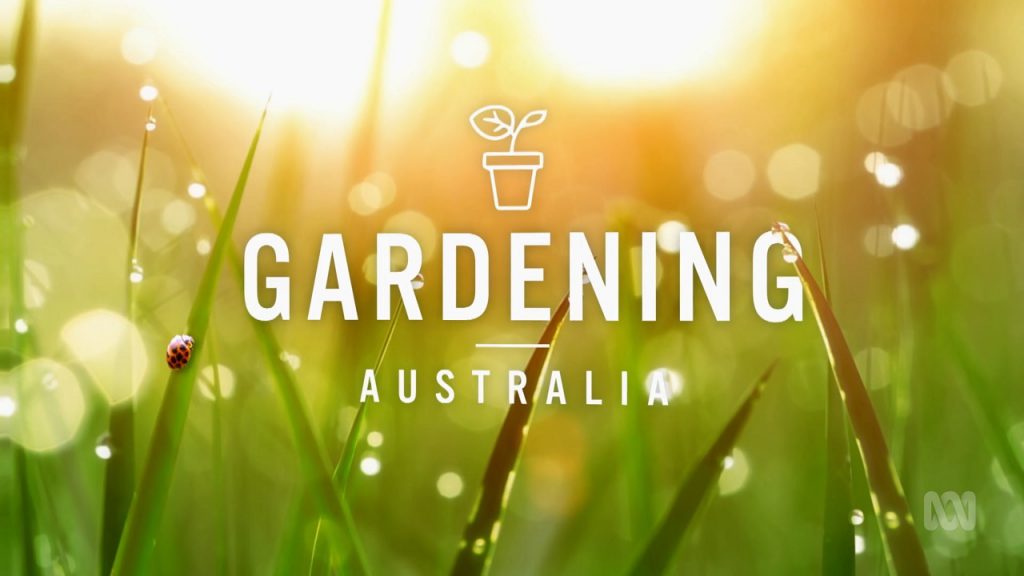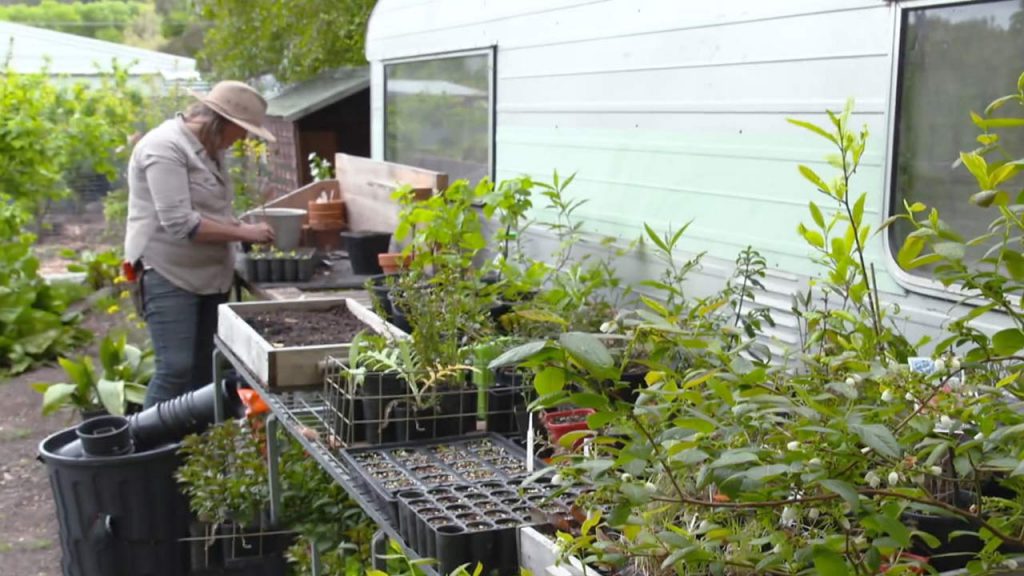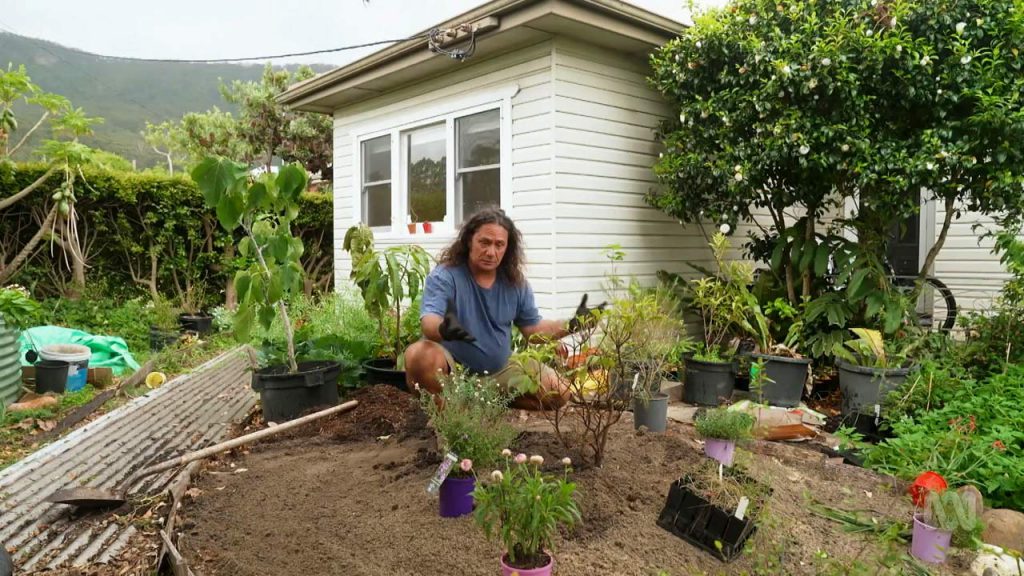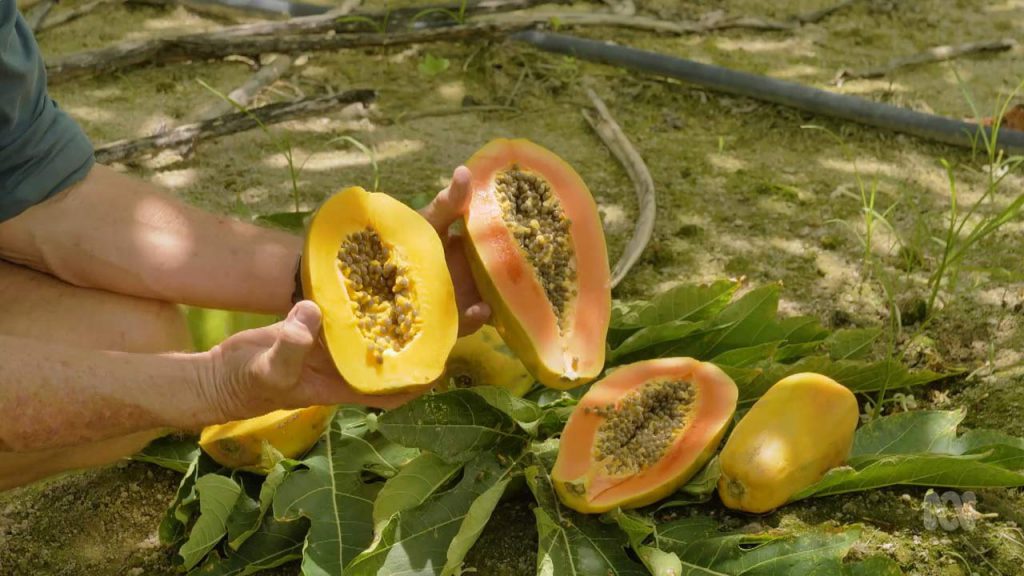Gardening Australia episode 15 2022: Millie Ross meets trainee rangers learning traditional ways to care for Country, Jane Edmanson explores a garden full of unusual plants, and Jerry Coleby-Williams meets a gardener who ate only home-grown food all year!
Inspiring, entertaining and full of practical advice, join Costa Georgiadis and the team as they unearth gardening ideas, meet avid gardeners and look at some of the most inspiring gardens from across the country.
Gardening Australia episode 15 2022
Training Rangers
Millie catches up with a team of trainee rangers who are learning both traditional and modern methods of caring for country. Warreen Beek means ‘Saltwater People’ in Bunurong language, referring to the coastal home of this innovative program. The Certificate III Land Management has been developed with the Bunurong and Wurundjeri Land Councils, partnering with Holmesglen TAFE and Trust for Nature. The course offers hands-on training and skills alongside cultural knowledge, with much of the course practiced in the field and on private conservation properties.
Today, the group are practicing weed-identification and control techniques on a property with an endangered vegetation community, Swampy Riparian Woodland. The property is home to Worimi man Rhys Collins, who also helped develop the program with Ben Cullen from Trust for Nature. Rhys says that the learning is not just a one-way transaction, the participants share their experiences and cultural knowledge with their teachers and fellow trainees. Wurundjeri woman and Cultural Knowledge holder Mandy Nicholson is also participating as a trainee in the program.
She says that the collaborative and culturally safe learning environment is important, as Aboriginal people are so often asked to live in dual worlds, “you can’t learn culture at a university.” Trainee Ranger and Ngarrindjeri woman, Marissa Williamson, agrees. “It’s very culturally gratifying. I love being with mob. We can’t really be ourselves in everyday society, so it’s like we are all a family.”
Cacti in the Crib – Gardening Australia episode 15 2022
Jane visits a plant lover whose suburban garden combines an eclectic mixture of rare, exotic and unexpected offerings. Jane is in Bentleigh, a south-eastern suburb of Melbourne. It’s the home of nursery manager Dylan Hewlett. Over 9 years in this rental house, Dylan has created a personal and idiosyncratic garden full of horticultural oddities. “It’s an eccentric garden,” says Dylan.
The garden sits in the back yard of a fairly typical-sized suburban block (around 200sqm). It has an outside garden that doubles as a plant collection, as well as 2 greenhouses, full to the brim with the seldom seen.
The outside garden is roughly split in two, between two in-ground collections. “I say it’s an eccentric garden because it’s cacti and succulents for part of it, versus a lush foliage tropical feel for the other part, blended together”. Here we find some real surprises in plants thriving despite being outside their traditional comfort zone.
Dylan’s worked in retail nurseries for over a decade, and wider horticulture for most of his life. As a plant “buyer” for a nursery, he’s responsible for scouring the country for rare and unusual horticultural treats to sell to customers. So what does the home garden of a professional plant picker look like?
Be Brave, Make Change
Clarence talks friendship with chefs Kylie Kwong and Aunty Beryl Van-Oploo, who have bonded over their shared love of good food, Indigenous ingredients, and family. Gamilaroi elder and educator Aunty Beryl Van-Oploo has been an advocate for bushfoods for more than half a century, paving the way for many others. When chef, author and television presenter Kylie Kwong first discovered Australian native produce it proved a ‘major light bulb moment’, and her determination to learn from the best First Australians led her to Aunty Beryl.
The two first met at the Carriageworks Farmers Market in Sydney where Aunty Beryl was selling her produce including the irresistible lemon myrtle butter biscuits. “They were so good, and those beautiful jams and sauces,” Kylie said.
Kylie credits the elder with teaching her all about preparing and cooking native ingredients traditionally, including how to steam fish wrapped in saltbush leaves and using the ever-versatile lemon myrtle in both savoury and sweet dishes.
Garden of Feedin’ – Gardening Australia episode 15 2022
Jerry meets a gardener who’s set herself the challenge of only eating food grown in her garden for a whole year! Around 15 years ago Sonia and her partner Rob decided they wanted to start building a food garden. “We never did a plan. We just did it bit by bit. We based in on convenience; we walk here so let’s plant here. It just evolved over time.”
In 2019, Sonia set out on a remarkable challenge to eat 100% of her diet from her garden. “It was just to see if I could do it.” “I did go to bed hungry a couple of times, but only a couple. It was challenging at times. I really missed bread, but it was really amazing the connection I felt to the garden. I’d love to do it again one day. Especially now that I have honey!”
Growing enough food to live off is a huge achievement, and the fruit trees here would have helped immensely. This area holds a litany of temperate, subtropical and tropical fruit trees; loquat, wampis, bananas, citrus, mulberry and peaches to name just a few. The food forest understory is edible too, with smaller cover crops like pepino and nasturtium.
Sonia has a rare passionfruit species to offer Jerry to try. “It’s a Japanese hard-shelled passionfruit (Passiflora maliformis). You crack the shell with a hammer like a nut, and the flesh is a really creamy passionfruit flavour.”
Hot or Cold Compost
Josh compares two methods of making compost – hot and cold – and shows how both can turn kitchen scraps and garden waste into food for your soil. Composting is part of Josh’s life routine; he loves it so much he has both hot and cold composts on the go with multiple versions of each. He helps explain which method’s right for you.
Cold compost is largely made up of kitchen scraps – the most regular type of organic matter most households produce. Josh uses large open bottom bins, partially buried to keep out rodents and other pests. When it comes to position, Josh places his bins under his deciduous pear tree. It shades his compost from the heat in summer and when it loses it leaves in winter it allows the sun to warm the bins, keeping the microbes working.
While cold compost is relatively low maintenance and easy to manage, you must be patient, as it may take up to six months until it’s ready to use.




